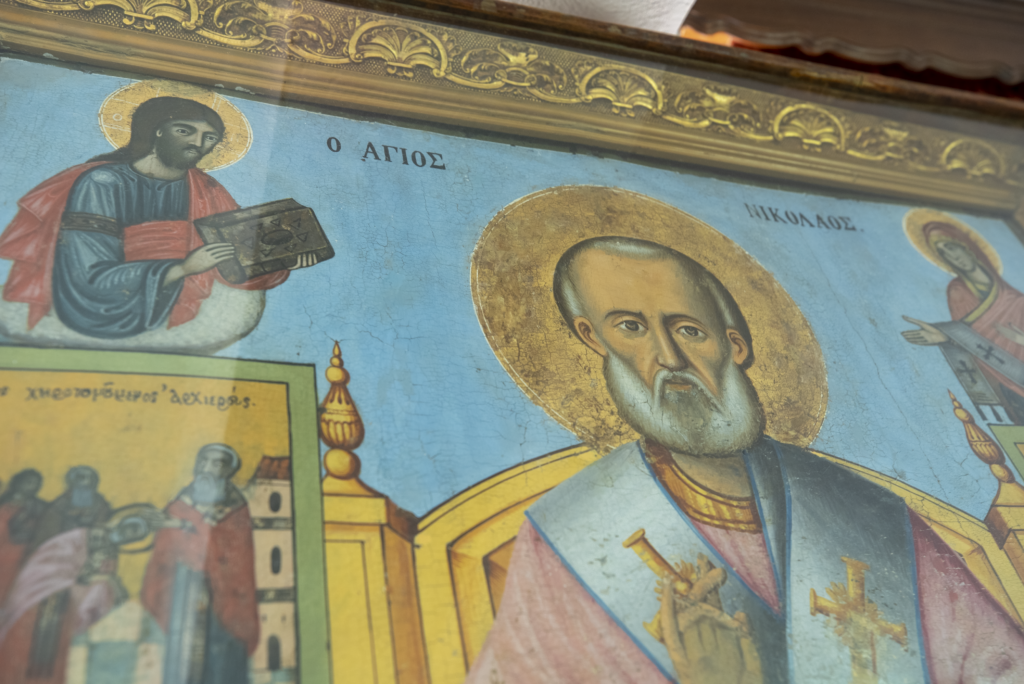
The icon of Agios Nikolaos dominates the small museum of the ‘Nea Sinasos’ Association. Agios Nikolaos was the patron saint of Sinasos, a saint traditionally associated with the sea who found himself on the plateaus of Cappadocia protecting the people of Sinasos who were always on the move.
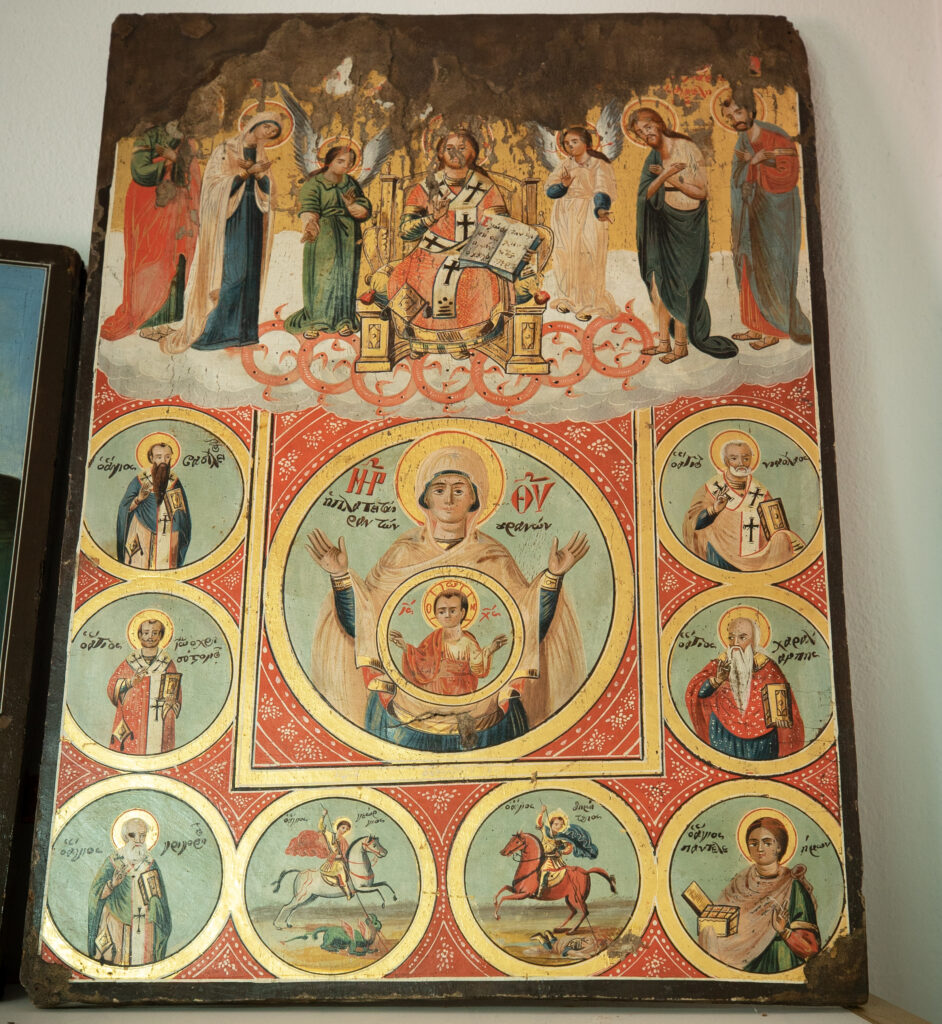
One of the icons donated to the museum of the ‘Nea Sinasos’ Association is an icon depicting Our Lady of the Sign (Virgin Mary with her hands upraised in prayer).
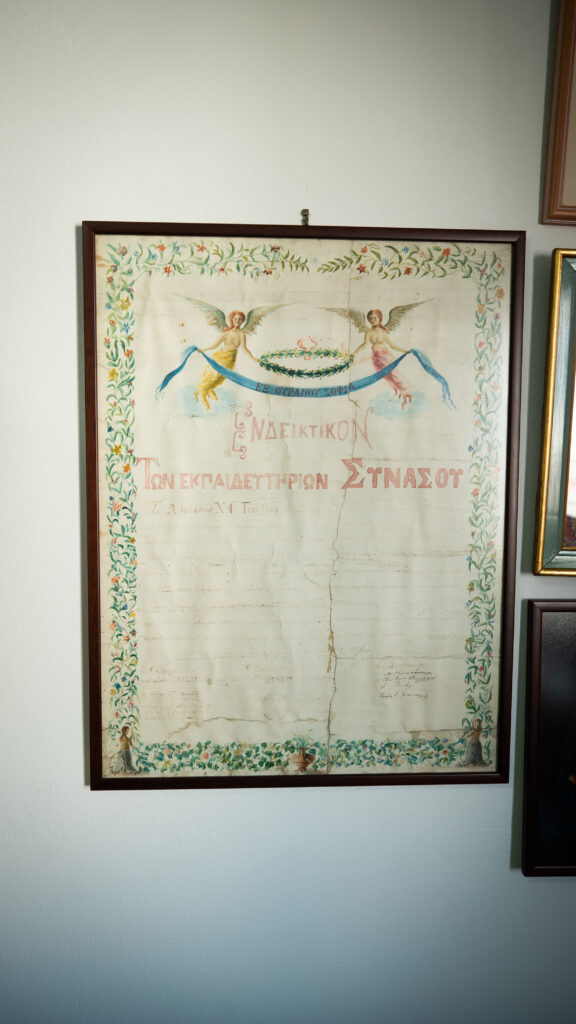
The handwritten graduation certificate for Athanasios Ch. G. Toperidis from 1898, which is exhibited in the ‘Nea Sinasos’ Association Museum, is only one of the hundreds such certificates issued for Sinasos men and women over the course of the almost 100 years that the schools of Sinasos remained in operation.
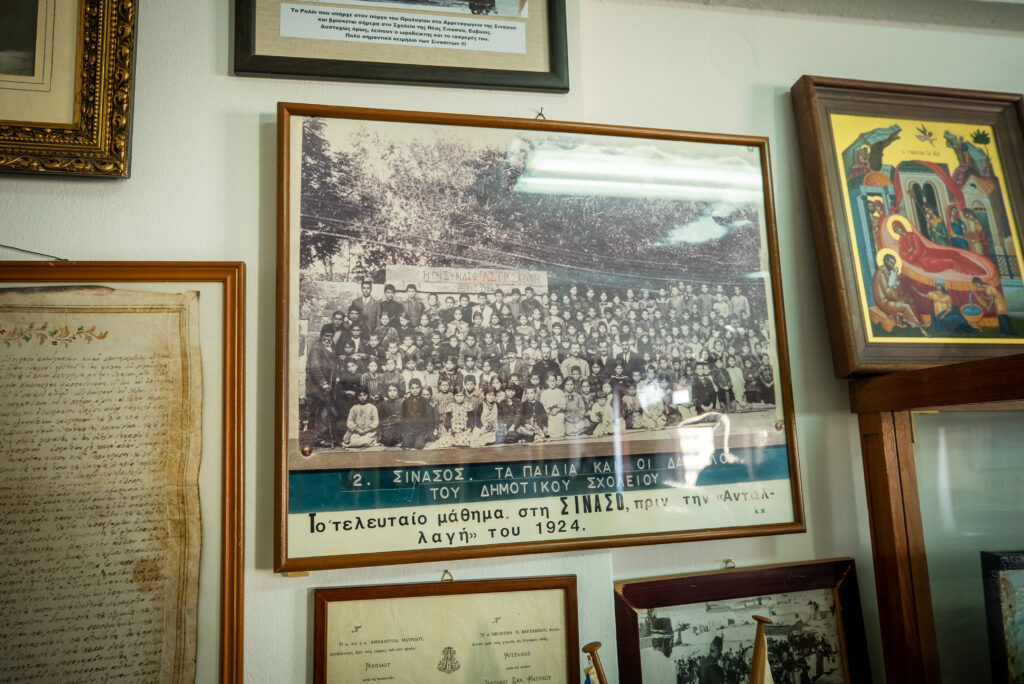
On the last day of school, the students took a commemorative photograph which they brought with them to Greece along with their textbooks. A copy of this photograph can be found at the ‘Nea Sinasos’ Association Museum.
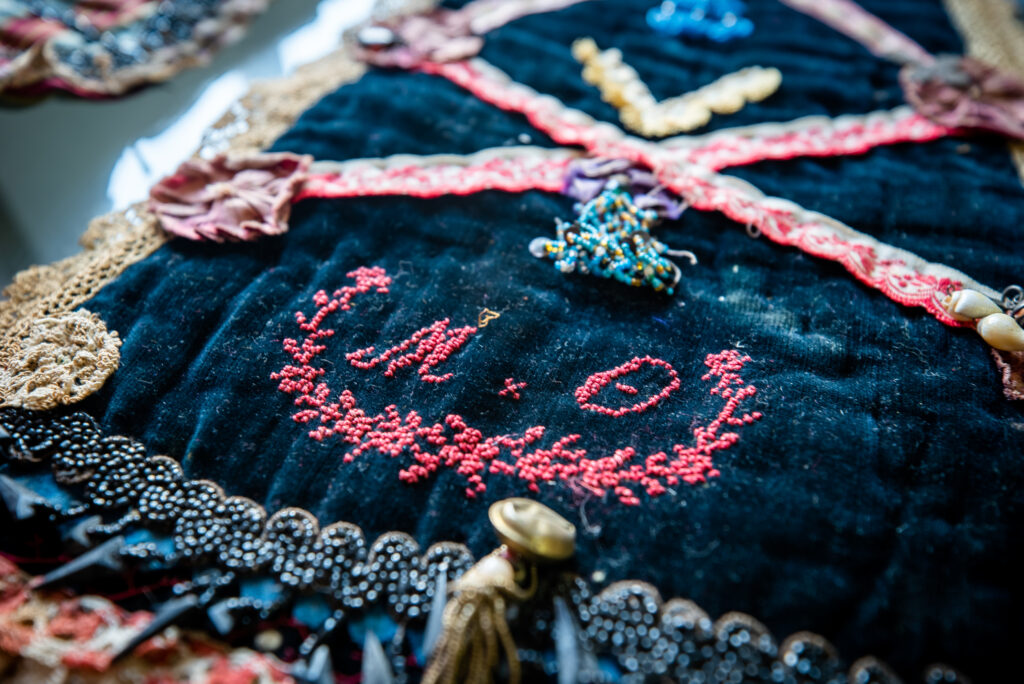
The ‘archaletsi’ could be plain or decorated, adorned with patterns, embroideries, charms, beads or other ornaments. The fact that these shoulder covers were detachable and were worn every day allowed their makers to create elaborate versions that could act as accessories to the traditional women’s outfit which was usually quite conservative in its use of colour and pattern.

The young women of Sinasos went to the water pumps to fill their clay pots with water for everyday household use. To protect the shoulders of their painstakingly constructed outfits from wear, they placed an ‘archaletsi’ over their right shoulder, a handmade cloth cover which they had usually made themselves.
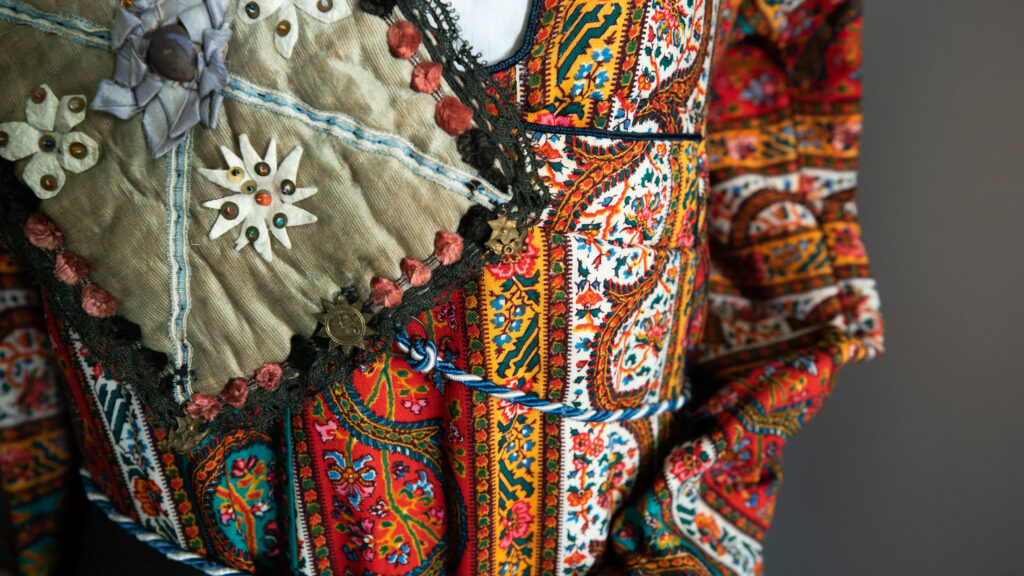
The women of Sinasos did not dance in public spaces, but only during private feasts in their homes and always accompanied by their fathers or husbands. During these feasts or other formal functions and celebrations, they would wear their ‘special’ traditional outfit, their version of formal wear.
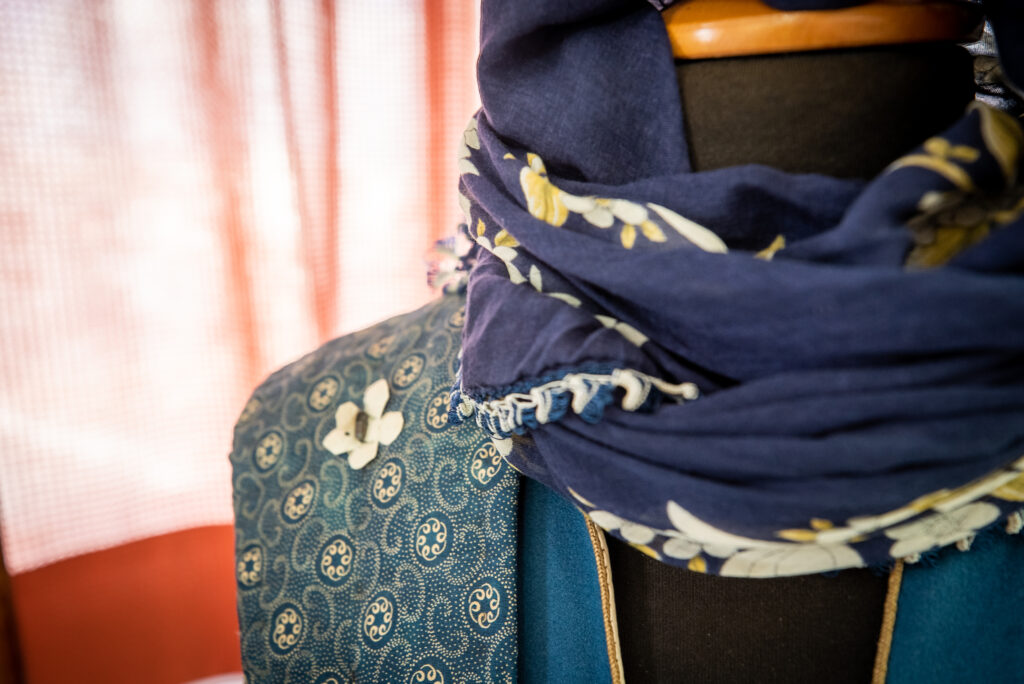
In October 1924, the women of Sinasos brought their traditional outfits with them to Greece, as they considered them highly valuable both from a material and a sentimental standpoint. Some women even wore them during their first years in Greece before they were ‘hidden’ in closets for years to eventually be donated, usually by descendants, to the ‘Nea Sinasos’ Association Museum, where they are still kept to this day.







